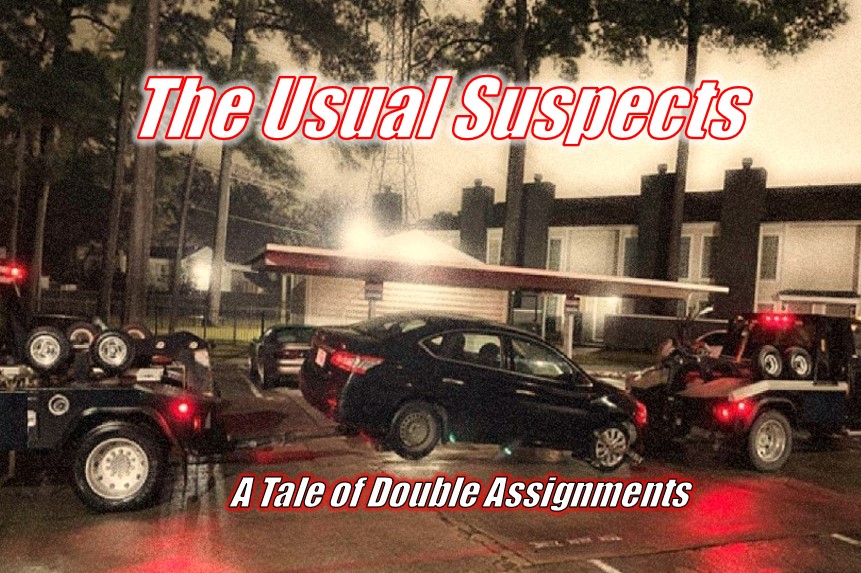EDITORIAL
In a repossesor network communication from PAR North America sent last week, PAR attempted to explain their methodology and expected procedures for the occasions and instances that they, admittedly, double assign repossessions. While a noble effort, it comes up short in definition and also serves as an admission of their practice in this dangerous act.
Dear Valued Agent Network,
We have been receiving an increasing number of complaints regarding the professionalism and conflicts arising from multiple agents trying to secure the same vehicle at the same time. I wanted to take a brief moment to discuss PAR’s policy and expectations in hopes to minimize conflicts, and to protect all parties involved.
As a rule, PAR doesn’t dual assign an address or account to an agent within a 50 mile radius to help avoid these situations. However, it is possible for an LPR agent to scan a vehicle that is assigned to another agent. PAR operates on a first call, first serve basis and we will authorize the scanning agent to secure if possible. PAR will immediately place the account on hold in RDN with the assigned agent so they are notified that the account is no longer active.
If you find yourself in a situation where there is another company trying to secure the same vehicle, please do the following:
1. Check RDN to see if the account is still open with your company.
2. If It’s on hold, please leave the vicinity immediately without engaging the other agent.
3. If it’s not on hold, please contact PAR for direction without engaging the other agent.
Please notify your Regional Vendor Manager of any unprofessional behavior that occurs in the field. PAR North America does not condone unprofessional behavior in the field and such actions could result in temporary assignment suspension. We thank you for your cooperation in regards to this matter. If you have any questions or concerns, please do not hesitate to reach out to your Vendor Relations department at vendorrelations@parnorthamerica.com (317-705-4982).
I am torn in my feelings about this communication, but do feel there is some merit in some of it’s content by establishing and communicating the procedures to follow in the field for such occurrences. Assigning an account to two different agents in two completely different areas, especially across state lines, is not too uncommon and can be an effective strategy for a quicker recovery without opening and closing assignments upon each new location effort.
Unfortunately, they have established “a 50 mile radius” as the limit for dual assignments without clarifying which 50 miles? Is it 50 miles between agency home offices? 50 miles between borrower addresses? If it is borrower addresses, then which ones? We all know some forwarders have a tendency to provide numerous addresses with little or no verification and the probability of agents running into each other is still pretty high.
On a positive note for PAR, they are at least trying to address what is an old and potentially dangerous problem that effects many agents and has, in the past, been a source of violent confrontations. Whether this was done in response to the potential legal exposure arising from one of these situations or actual litigation in process or resolved is something only PAR can say, but at least they admitted to dual assignments, which was no big secret anyway.
Kevin Armstrong
Editor
















Facebook Comments